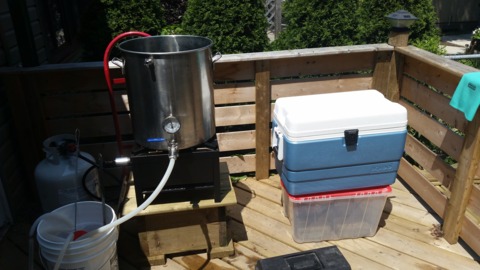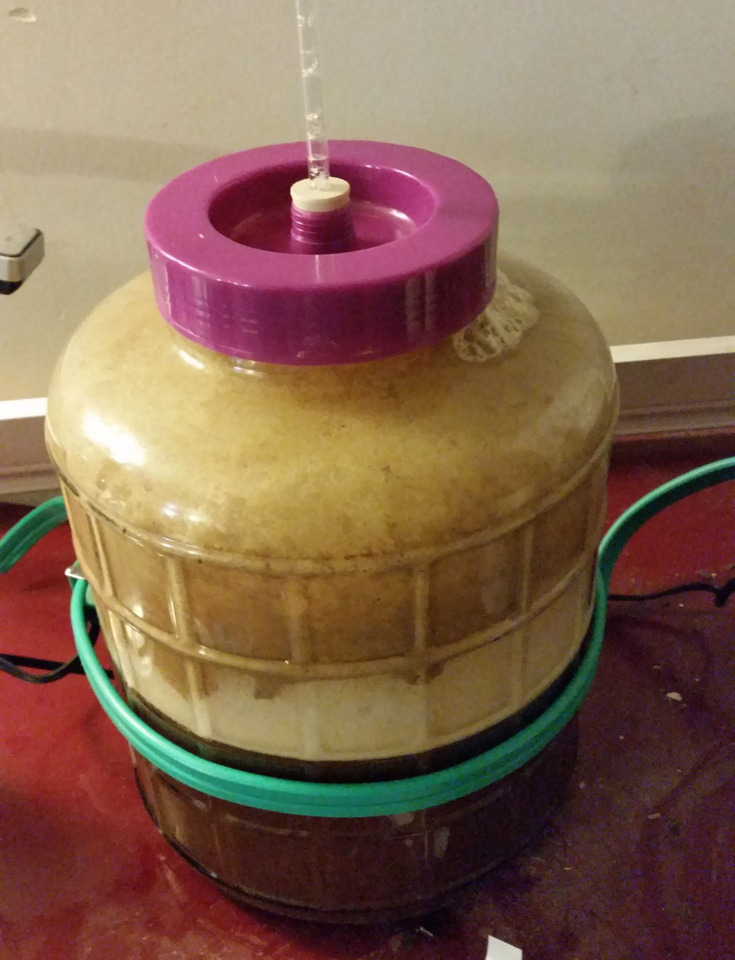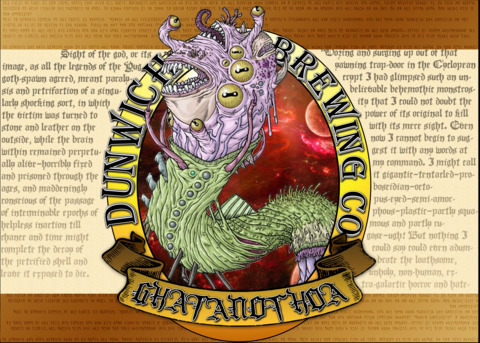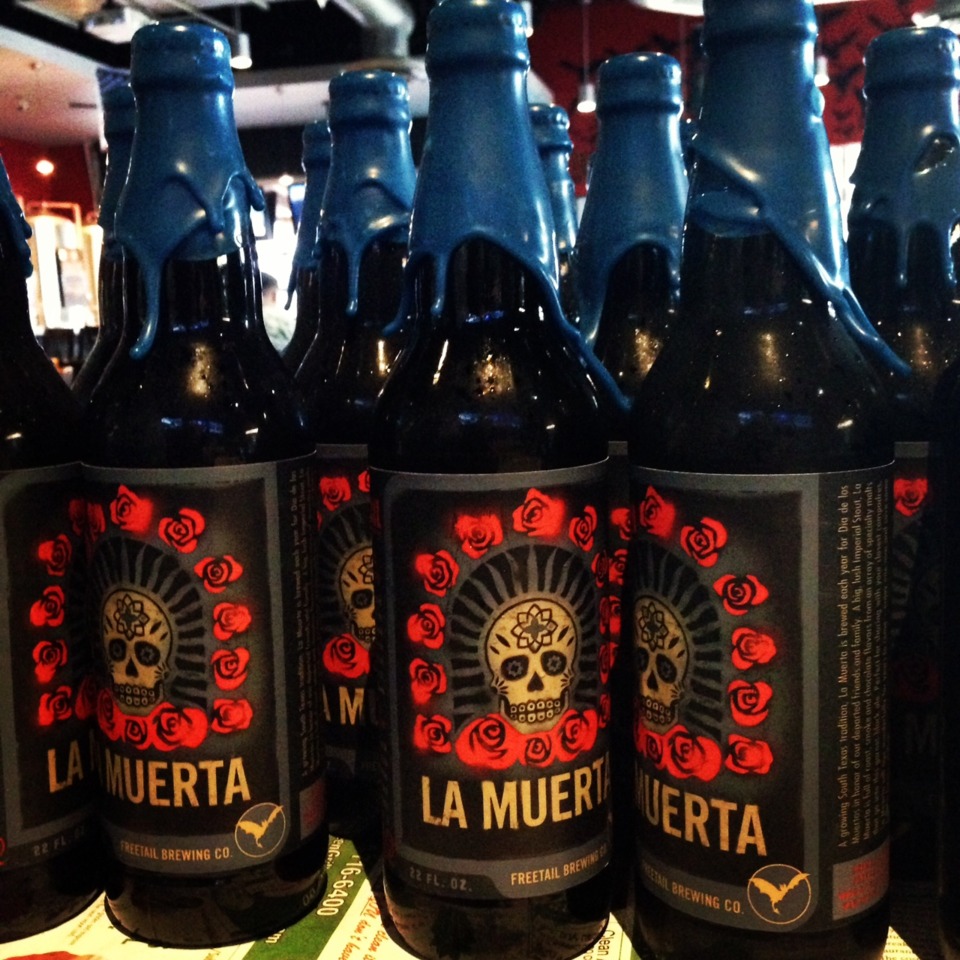Making beer, at home!
By D_Mac 5 Comments
Waaaay back in 2012, I was bitten by the homebrew (beer making at home) bug. I picked up a book on the subject, that was on sale, as a lark, and it really grabbed me; but, what really got me going was @brewmaster_andy's awesome forum posts and videos on this site. In advance of PAX East 2012, Andy posted this terrific video that laid out the steps of making an all grain batch, and that got me really excited.
Note: I'm going to use a lot of words that are specific to brewing, and try to explain where I can.
Fast forward two years, and I'm finally brewing! I quickly learned that brewing is a lot of chemistry and plumbing, with a little math splashed in there. I jumped right into all grain brewing, as that's what really appealed to me. For those that don't know, home brewing beer falls into two categories, primarily: extract brewing, and all grain. There are variations on those two, but broadly they fall into one of those two categories. Brewing is basically getting sugar out of grains by soaking it in water, and then fermenting that sugar water (aka wort), with our friends, yeast. All grain brewing achieves this by soaking the grains in hot water until the starches come out, and enzymes that are inside the grains break the starches down into sugar (in this case the sugar we get is maltose). All the other stuff that also leaches into the water from the grains; the fats, and proteins, also ends up in the water and contributes flavour to the beer. Extract is very similar, except the first step, the part where starch is extracted from grain and converted to sugar, is done for you. All you have to do with extract is dissolve the sugar in hot water (it usually comes as a powder or a thick syrup). There are a couple more steps, and how much detail you pay attention to gives you more control over the different aspects of the final product.

I opted for all grain gear, specifically what's called an infusion mash setup. Below you can see basically what I've got. It's a 15 gallon brew kettle (aka the hot liquor tank, or HLT). This is where water for soaking the grains gets heated to the correct temperature, and where the wort (the sugar-water before it gets fermented) is boiled. It's sitting on top of a Costco propane burner, this thing gets really hot, really fast. Next to the HLT is an Igloo cooler modified with a filter screen, and a stainless steel ball valve. We call the cooler the mash lautner tun, or MLT, and it's where the grain and the hot water hang out, until all the straches have dissolved into the water and the enzymes have tunred them into sugar (sacchrification). The tool box that's barely visable at the bottom of the frame there, that's got a pump in it, which I need because I'm a fat old man and lifting heavy things sucks, and it also makes recirculating the wort, and sparging a lot easier. What's sparging and why recirculate? I'm glad you asked...
As it turns out, when making all grain beer, the husks of the grain play a really important role. In addition to containing important flavour compounds, the husks act as a filter, separating out the stuff you don't want, like excessive lipids (fats) that make your beer cloudy, and not look nice. So, after the water and the beer hang out for a while, we pump the liquid out of the valve on the side of the cooler (that you can't see) and put it right back in the top of the cooler so it can filter down through the grain, getting rid of the things we don't want. The pump makes this SUPER easy, especially if you're all by yourself.
In the bottom left is a big bucket full of sanitizer, which is used to make things free from wild yeast, and bacteria. I cannot emphasize this enough: sanitizer is my best friend. There's nothing worse than making 5 gallons of beer and then having to toss it out because it got a bug. I sanitize everthing, even the stuff that gets boiled. I know, that seems silly, but it's a worthy precaution.
The last part of my setup, that you don't see, is a plate chiller. Cooling down the beer is important for two reasons: firstly, yeast (the living organisms that do the fermenting) like a very specific temperature range, and if the beer is too hot or cold they could die, or just go to sleep, the end result being NO BEER. The second reason why it's important is that after boiling the wort, there are these volatile compounds that will break down the longer that the water is within a certain range. The faster the wort is cooled, the less of these volatile compounds break down, which is good, because they can make beer taste weird.
The plate chller is basically like a car radiator, cold tap water is run through a series of chambers, and the hot wort is run through a series of adjacent chambers. The tap water and the wort never actually come into contact, but they're in copper chambers, side by side, and so the colder water cools down the wort very quickly and efficiently. This is also where the pump comes in handy.

From there, the cooled wort goes into a fermentation vessel. I use glass carboys, in various sizes, but I dream of a day that I have a fancy, stainless steel, conical fermenter. You can see one of my carboys to the right, there, fermenting away. This was a pretty high gravity (lots of maltose [grain sugar]) wort, so it's really going strong. I have a little heating belt on it, because I leave them in my basement, which, even in the summer, is a little cool, and yeast like very specific temperature ranges (what those ranges are varies with the strain of yest).
Thus far I've made four batches. The first one was this little 1 gallon kit, and it went great until I messed up when bottling. The other three are chugging along and I should be bottling soon. The first is a Belgian Dubbel, a style of strong, dark ale. The second is a Belgian Wit. The last is what's called a Graff, which is an invention of a gentlemen named Brandon O (as I understand it, anyway), and named for a fictional drink from Stephen King's the Dark Tower series. It's a mix of apple cider and wort that's fermented together. @brewmaster_andy has a great video of how to make a graff, and if you like cider I would really recommend trying that recipe, and watching Andy's video, as it's super easy to make, and pretty tasty stuff.
With 15 gallons of beer almost ready to bottle, comes a really fun part. Naming the beers and making labels. Some people get way into this stuff, and being a big nerd, I couldn't help but go a little over board. I have a particular love of Belgian styles, specifically Trappist style ales. Tappists are a particular French monastic order that's famous for their beer and cheese. They've been making this stuff, in a couple of styles, for hundred of years. Way back in the good old days, when the monks made beer, but had no concept of alcohol percentage, or ABV, other than "this stuff gets you drunk, fast", they instead warned their customers of how strong the beer was by giving names like "the devil" or "demon". The stronger the beer, the scarier the name.
I decided to give all my beers a scary monster names. I really like the works of H.P. Lovecraft, so I decided to name the beers after creatures, gods, and other monsters, from his work. Then I went about making the labels. At first I made them kind of colourful and a little garish. It wasn't evoking the "scary" feelings I was hoping for.

I decided, instead, I wanted the labels to look as though they were pages torn from some ancient book of demonology. I wanted it to look hand drawn, old, and spooky, as though something terrible may lurk inside. So this is what I ended up with:

So that's what I'm going with. It's not like I'm going to sell it, it's just to give away to friends and what not, so I figured, might as well have fun with it. I should mention that I stole the centre art, of the monster, from this awesome blog where artist Michael Bukowski has drawn all of the Lovecraft monsters (and some others) and included the passages of text that describe them.

That's it so far. When I've bottled everything, and added the labels, and waxed dipped the bottles ala the accompanying photo, I'll post and update. Again, huge thanks to @brewmaster_andy for the inspiration, answering all my silly questions, and being an all around awesome guy. I'll also try to upload some well edited video to Youtube of a brew day, but it's a little tough when you're all by yourself, and you're still learning.
